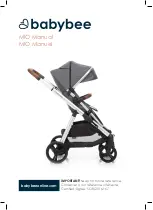
4/8
Siemens Building Technologies
Installation guide
CA2Z3884en
Building Automation
08.2001
1
Electromagnetic compatibility (EMC)
The term electromagnetic compatibility (EMC) covers both the emission of interference
into the environment by a product, and the immunity of that product to interference from
the immediate environment.
Information on electromagnetic compatibility is supplied under “Technical data” in the
SBT product documentation. The data on interference immunity defines the operating
environment in which the product can be used without impairment.
Excessive interference (above the interference immunity level specified) can impair
trouble-free operation. Excessive interference may occur, for example, in the vicinity of
radio transmitters or frequency converters, where very high levels can be reached.
The most effective protection against this type of interference is to segregate signal and
control cables from interference-emitting cables (e.g. the cables of frequency
converters or switched loads). This can be achieved by routing the two types of cable in
separate sections
of the cable trunking. If this solution is not adequate or not possible,
twisted pair or screened cables must be used. If twisted pair cables are routed in the
same trunking as, for example, the supply cables of frequency converters, the two
types of cable must be at least 150 mm apart. For screened cables routed in the same
trunking as power supply cables, this minimum spacing is not necessary. Where
interference-emitting cables intersect with cables which are susceptible to interference,
they should cross at right-angles.
To ensure that the cable screen used works to optimum effect, its entire circumference
must be firmly connected at both ends to structural earth. ("Structural earth" refers to
the metal housing, mounting plate, control panel frame etc. connected to the building
earth).
To ensure the effectiveness of cable screens at high frequencies, they must always
be connected at both ends to the earthing system. Equipotential bonding via the
cable screen must never be allowed. Instead, some other suitable arrangement is
required (e.g. with the earthing system, or by connecting one end of the cable
electrically and the other capacitively to structural earth).
•
In the absence of equipotential bonding (e.g. with connections between buildings
over large distances).
•
If large 50 Hz compensating currents pass via the cable screen.
•
Note that special rules for connecting the screen apply in environments exposed to
explosion hazards.
The cable screen must be continuous and provide good coverage. The screening
effect is reduced significantly if the screen is not continuous.
Very good:
Braided screen with good covering
Satisfactory:
Foil screen
Unsatisfactory
:
Vapor-plated screen
Do not use cables of less than the specified cable cross-section. Conductors must
not be wired in parallel as a means of increasing the cross-section.
Definition
Interference in the
environment
Cable routing
Screened cable
When to connect the
screen at one end only:
Features
Cable cross-section

























